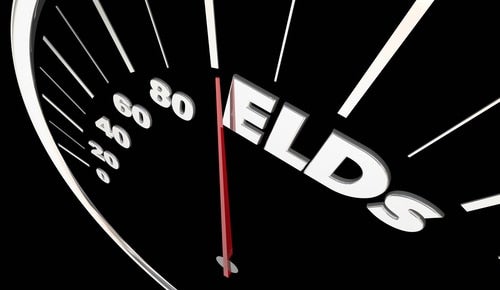
A just-completed study on the impact of the Electronic Logging Device mandate, published by the Owner Operator Independent Driver Association which has been vocal in its opposition to various aspects of the ELD mandate, is–not surprisingly–extremely negative toward the rule.
And days after the study results were released, OOIDA released a letter sent to the chairs and ranking members of the House and Senate committees that oversee truck transport issues.
In it, OOIDA acting president and CEO Todd Spencer requested an oversight hearing on the issue of ELDs. The letter requesting the hearing focused heavily not on issues such as driver fatigue, but on technical problems with many of the devices.
“Truckers have routinely shared with us substantial troubles they’ve experienced related to devices, including several vendor-wide systems failures, faulty GPS tracking, inaccurate recording of duty statuses, engine disablements, speed irregularities, abysmalcustomer service from manufactuers, a worsening truck parking crisis and many more,” the letter said. “Truckers are left wondering why the federal government allowed ELDs to be self-certified by manufactuers in the first place and what is being done by regulators to develop greater certainty for all stakeholders.”
Separately, the study’s negative tone was summed up early. “While (the Federal Motor Carrier Safety Administration) estimated the mandate to cost approximately $2 billion, anecdotal evidence suggests that the real-world impact might be even larger, by not only raising the cost of goods and services but also increasing the risks of fatigue, harassment and crashes.”
OOIDA is transparent about the size of the survey. It received approximately 2,000 responses by February 5. About 39% of the respondents were owner operators, and 40% were on lease to a carrier. The other two categories were described as company driver, and fleet owner.
The tighter ELD rule went into effect in December, but 35% of the respondents in the survey said they hadn’t yet purchased and installed one. Of the drivers on their own authority, 61% said they had purchased an ELD, and 73% under lease had done so. The low was company drivers, with 44% installed.
The OOIDA summary of the report does not let up in the group’s criticism of the rule. It said FMCSA’s decision making was “constructed…entirely” on a small number of carriers with poor safety records, and others who had used automatic onboard recording devices–a lesser tool than an ELD–“in lieu of paying civil penalties for their habitual (hours of service) compliance violations.”
According to the survey, 79% of the resondents of the OOIDA survey said the ELD mandate was decreasing safety overall; 75% said they felt the “need to speed”; 72% said they were more tired and 44% said they were “more harassed.”
The ELD mandate was established to record compliance with long standing Hours of Service rules. The ELD mandate went into effect in mid-December, but more stringent enforcement will begin in April.
Not the first time OOIDA has gone after ELD
OOIDA has been highly critical of aspects of both the ELD mandate, most recently petitioning FMCSA for a five-year exemption from the rule. It is not a view shared throughout the industry; the American Trucking Association, for example, described the OOIDA petition as based on “a series of warmed-over, ill-founded assertions that ELDs do not improve safety.”
Given that the survey has come from an organization vehemently opposed to the ELD mandate, greeting it with skepticism is natural. However, it does have some interesting data on the cost of ELDs and how they’re paid for. According to the survey, 53% of buyers of an ELD needed to pay an “upfront cost.” The average price of an ELD was $830. According to the survey, 55% of the buyers of a device also had to pay a monthly fee, and 70% were charged per truck, the average fee between $33 and close to $40.
The view of OOIDA can be summed up in this quote from a member, highlighted in the survey: ““If the ELD rule is to remain, the HOS regulations need to be changed to remove the 14-hour window as it causes us to push harder to complete a run than we otherwise would. Taking a nap because I’m tired or ill or screwing up my sleep schedule and having to drive a certain shift when I’m not used to it, having to combat rush-hour traffic, and not having sufficient parking are all results of the new mandate. With the new rule, safety and common sense takes a back seat to government overreach and the wants of the big carriers so they can push out the smaller companies.”










